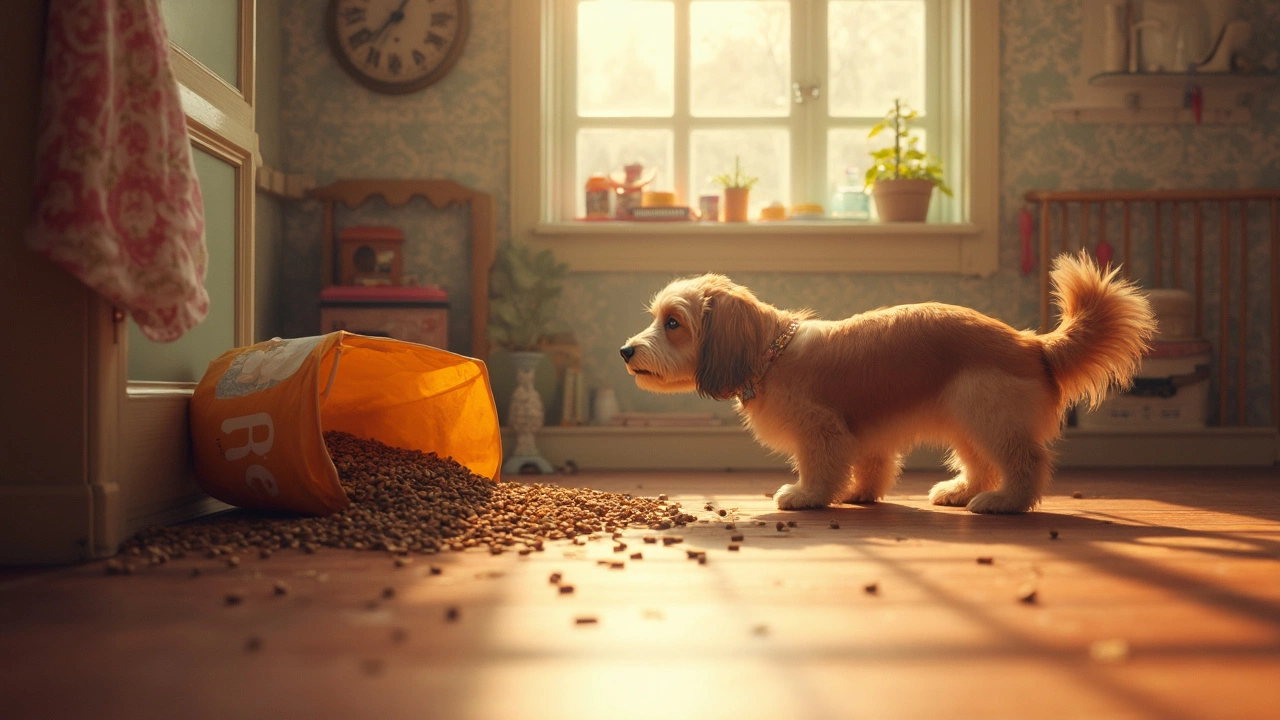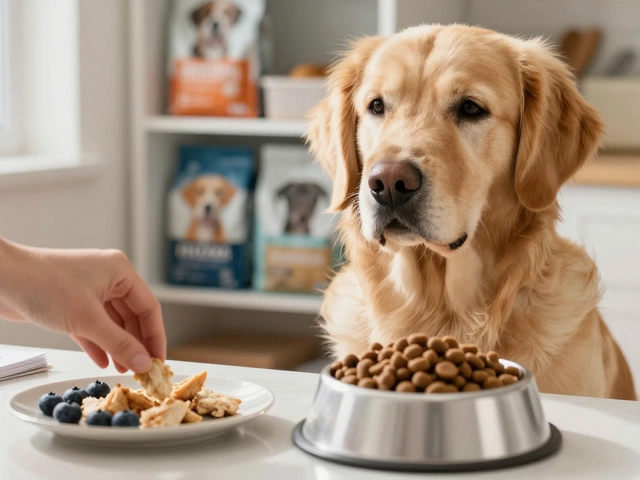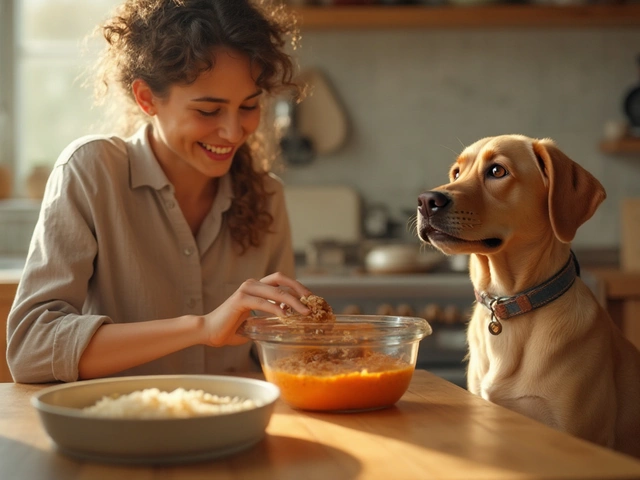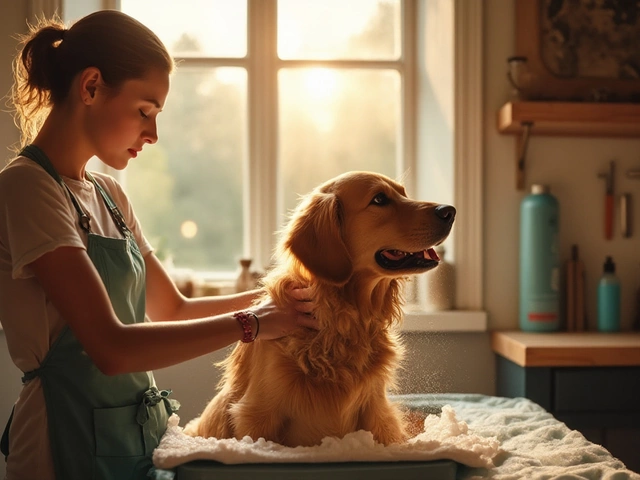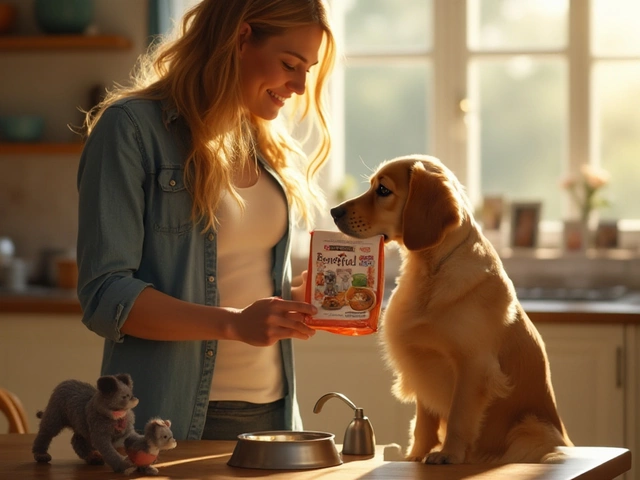So, you're wondering if it's okay to just leave dry dog food out for your furry buddy all day? It seems like a no-fuss way to keep them fed, but let's chew over a few things before deciding. My dog Ralph was notorious for grazing at his convenience, and I figured it was the perfect setup until I started noticing a sniff of stale kibbles.
First off, dry dog food, or kibble, is meant to be convenient. It's designed to last longer than wet food and is easier to store. But, just because it can sit out doesn't mean it should be left willy-nilly from sunrise to sunset. Over time, especially if your dog doesn't gobble it up in a couple of hours, the kibble can lose its crunch and aroma, which might not be too appealing to your furry critic.
Now, why does this matter? Well, freshness impacts the nutritional value. Nutrients start to break down when exposed to air and moisture. So, if your dog's food sits out for too long, they might not be getting the full benefits of what you intended for their diet. Plus, there's the cleanliness factor. Stale food can attract bugs or get contaminated, which no one wants in their pup's meals.
- Understanding Dry Dog Food
- The Pros and Cons of Leaving Food Out
- How to Keep Dry Food Fresh
- Signs Your Dog’s Food Needs Changing
- Best Practices for Feeding Your Dog
Understanding Dry Dog Food
Dry dog food, or kibble, is probably the most common chow you'll see served to our four-legged pals. It's the kind you can grab, scoop, and pour without much fuss. But what's really going on inside those crunchy bits?
The biggest perk of dry dog food is its long shelf life. It doesn't spoil as quickly as wet food. This is because most of the moisture is removed during processing, making it less likely to harbor bacteria and mold. This handy feature is why many pet parents choose to keep a stash of kibble around.
Now, let's chat nutrition. Dry kibble generally provides a balanced diet with protein, fats, fiber, and essential vitamins and minerals. But here's the kicker: not all kibbles are created equal. There are different formulations based on factors like age, size, and activity level. A puppy has different needs compared to a senior dog, so picking the right type of kibble is crucial.
An important thing to consider is the ingredient list. Ingredients are listed by weight, but that can be trickier than it sounds. A fresh chicken might weigh more than chicken meal, but the latter has more concentrated protein. So a top tip is to look for a kibble with high-quality protein sources like chicken, beef, or fish.
Something else you might spot on the bag is information about the guaranteed analysis, which tells you the minimum amounts of protein and fat, along with maximum percentages of fiber and moisture. For a little extra knowledge, think about this: most good quality kibbles have a protein content between 18% to 30%, depending on whether they're for maintenance or growth.
Feeding habits might look different in each home, and understanding the ins and outs of dog food can make a big difference in your pup's overall well-being.
The Pros and Cons of Leaving Food Out
Leaving dry dog food out all day has its ups and downs. It can seem like a good plan at first, but, like with most things, there’s a bit more to it.
Let’s look at the bright side first. One of the major perks is convenience. If you’re out all day or running around on a busy schedule, having food available for your pup when they’re hungry is super handy. It also means your dog can manage their own eating times, which is great for dogs that are good self-regulators. Some dogs, like Ralph, nibble a little here and there instead of scarfing down everything at once, making this a practical approach.
But there are downsides too. First, there's the freshness issue. Dry kibble can get stale when left out, losing its flavor and some nutrients. Picture this: after a few hours, what's appetizing for your pup when it's fresh could practically be cardboard by evening. And then there’s hygiene to think about. Stale food might invite unwanted visitors, like insects or even mold, especially in humid areas.
An important thing to consider is your dog's personality. Some dogs love a good snack binge, and this approach might lead them to eat more than they should, pushing them towards obesity. On the flip side, if your dog is a social eater and doesn't like to eat alone, leaving kibble out might go uneaten until you're back.
So, should you leave food out all day? It really depends on your lifestyle and your dog's habits. Being aware of the pros and cons helps you decide the best feeding strategy. Whatever works, just make sure it fits comfortably with your pet's needs and your schedule. After all, keeping your pup happy and healthy is what counts in the end!
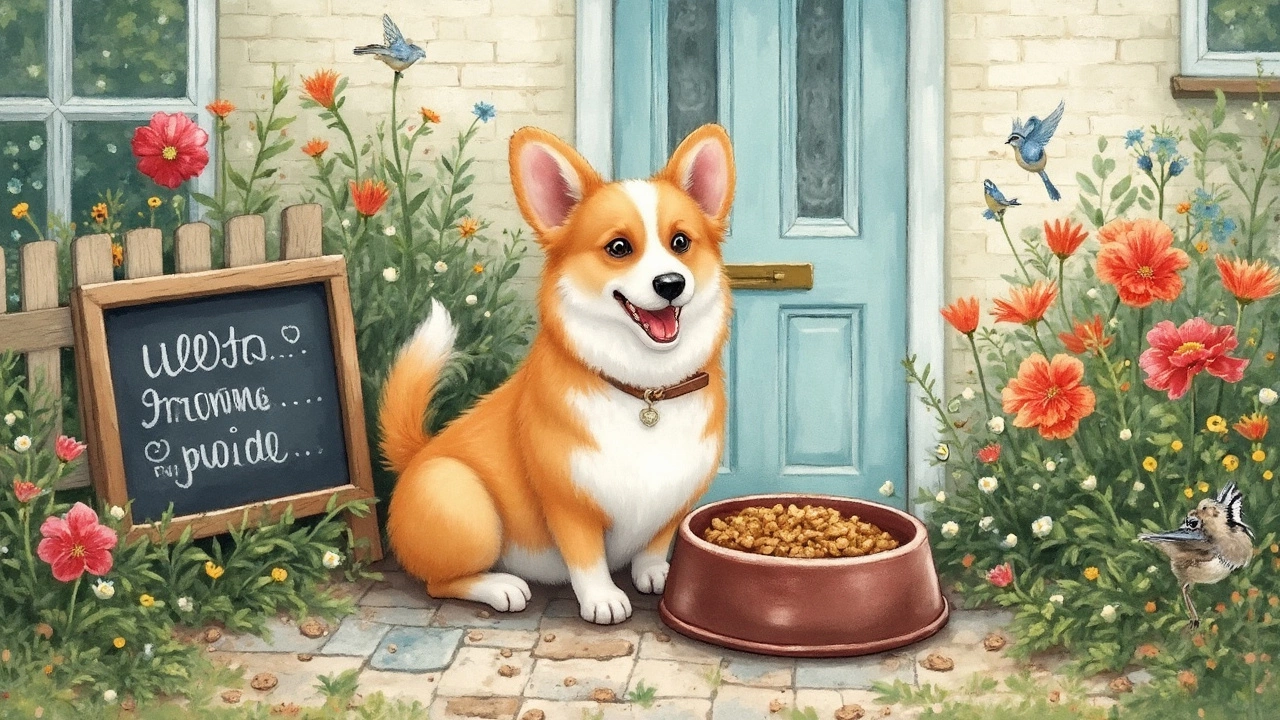
How to Keep Dry Food Fresh
Alright, so to make sure your dog’s dry food is as fresh as Ralph likes it, there are a few handy tricks you can try. You don’t want your furry buddy munching on stale kibbles, right?
First things first, proper storage is key. When you open a bag of dry dog food, keep it in its original bag. Those bags are specifically designed to protect the food from air and moisture. Once it's open, tuck it inside an airtight plastic or metal container. This double protection helps in keeping the kibble crisp and full of nutrients.
Next up, think about where you stash the food bin. Keep it in a cool, dry place, away from sunlight. The heat can cause fats in the kibble to go bad faster, depriving your dog of the goodness they need.
If you’re buying in bulk to save some bucks, which many do, make sure you're not hoarding more than three months' worth of food at a time. Most dry foods are recommended to be used within a week or two after opening, but if you have properly stored them in airtight containers, extending this to a few weeks is possible.
Lastly, when filling your dog’s bowl, only put enough for their immediate need. Think of it as fast food vs. leftovers; fresh serving is always the tastier choice. If they don't eat it all in one go, don’t leave it out indefinitely. Rather, cover it up or store it until they're ready for more.
Following these tips ensures that your dog’s meal is fresh and healthy. This way, you'll also avoid attracting any unwanted pests and maintain the food's nutritional quality for your beloved pet.
Signs Your Dog’s Food Needs Changing
Wondering if it's time to switch things up and opt for new dog food for Ralph? Your dog might actually be giving you some not-so-subtle hints. Just like humans, dogs can get bored or even have a negative reaction to their diet over time. So how do you know when it's go-time for a change?
First thing's first, keep an eye on your dog's energy levels. If your typically bouncy buddy suddenly turns into a couch potato, their current food might not be giving them the nutrition they need. Weight fluctuations are a big clue too. If you notice that Ralph's either packing on the pounds or shedding them without working out, his diet might be the culprit.
Another biggie is skin and coat health. A dull coat or persistent scratching might signal an allergy or simply that Ralph isn't getting the right nutrients. The same goes for tummy troubles. Frequent bouts of doggy diarrhea or excessive gas indicate that your pup's stomach isn't on board with their current dry dog food.
Take a peek at the food itself. If it doesn’t smell right or Ralph snubs it like yesterday's soggy toast, it’s probably time for a fresh bag. And finally, don’t forget to check the expiration date. Dry dog food does have a shelf life, and feeding your pooch out-of-date kibble isn't going to win you any Best Pet Parent awards.
Sometimes, it helps to jot down these signs over a couple of weeks to spot patterns and be sure it's not just a bad-food-day or two. After all, keeping Ralph in top shape is what it's all about!
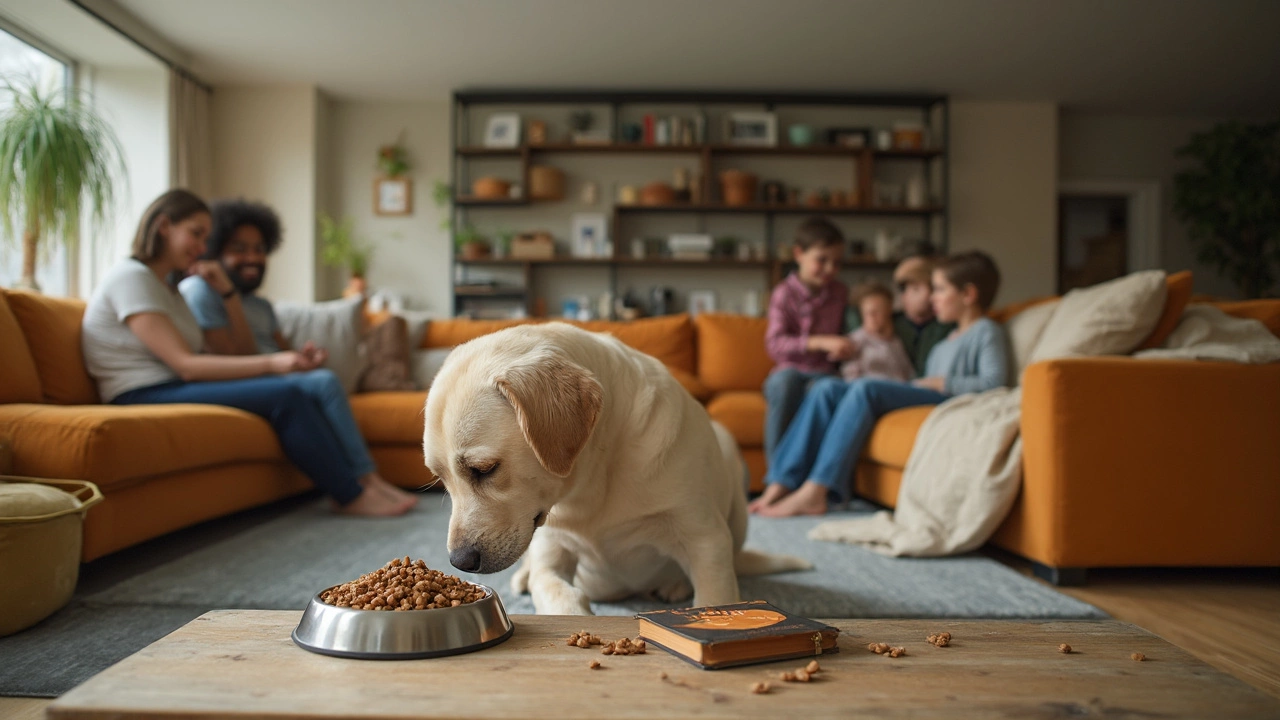
Best Practices for Feeding Your Dog
When it comes to feeding your beloved furball, there are a few tried and true methods that keep both your pet's belly and your conscience happy. The goal? To ensure they get the right nutrients without fussing over stale food or sneaky bugs. Let’s get into it!
First things first, sticking to a daily feeding routine can work wonders. Most dogs thrive on consistency, so offering meals at the same time each day helps regulate everything from their hunger cues to bathroom breaks. I usually feed Ralph twice a day—once in the morning and again in the evening.
Portion control is another biggie. Overfeeding can lead to obesity, which isn't just a cosmetic issue but a real health risk for dogs. Check the feeding guidelines on your dog food's packaging or chat with your vet for custom advice. They’re like our nutritionists, after all!
When choosing a dog food, quality matters. Look for products with balanced ingredients, meeting AAFCO guidelines—the gold standard for pet food. It's reassuring to know the diet meets all their nutritional needs.
Dr. Jane Smith from Canine Nutrition Labs shares, “A balanced diet is crucial to maintaining your dog’s health. Look for premium dry dog food that lists meat as the first ingredient.”
“A balanced diet is crucial to maintaining your dog’s health. Look for premium dry dog food that lists meat as the first ingredient.” — Dr. Jane Smith, Canine Nutrition Labs
Also, keep dry dog food in an airtight container. It protects from air exposure and keeps out pests. Who wants stale kibble, right? You can usually pick up these containers at any pet store, and they're a game changer.
Here's a quick snapshot of what's essential in your dog food shopping:
- Protein First: Ensure meat tops the ingredient list.
- Carbs and Fiber: Look for wholesome grains or veggies.
- Essential Fats: Great for their skin and coat health.
Feeding your dog can seem like a simple task, but a bit of attention to these details makes a huge difference. Happy feeding time means a happy dog, and that’s a win-win!

